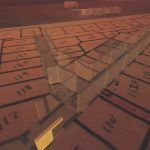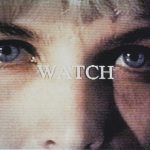Lynn Hershman: Life Squared
Artist(s):
Collaborators:
- Henry Lowood
-
- Stanford University
- Michael Shanks
-
- Stanford University
Title:
- Life Squared
Exhibition:
Creation Year:
- 2007
Category:
Artist Statement:
For over three decades, in performance, photography, installations, artificial intelligence agents, artifacts, web presences, and movies, Lynn Hershman?s work has dealt with what it is to live in a world of mediated, surveilled, documented, translated, manipulated, transformed identities, corporealities, and presences. Ninety boxes of the remains of much of this work now lie in an archive at Stanford University: papers, photographs, tapes, movies, sound recordings. Their relationship, as documents, to Lynn?s body of work is in question. Life Squared is an experience in an online world, a prosthetic world of avatars, their buildings and goods. It raises all sorts of questions about contemporary experience ? real, synthetic, mediated, technology assisted. What is it to recollect in this contemporary world of mediated and multiple presences? What about the prospect of even greater (bio-info-technological) intervention in our sense of self? Will your clone know you? Will your downloaded memories convey the experience of what was? Indeed, with our identities today distributed through all manner of records and documents, our sense of self maintained by all manner of goods, technologies, and media, did you ever know who you were?
Technical Information:
Life Squared is about building an experience in an online world. How is a work of art such as a transient installation in a hotel room to be curated by a museum? How is an experience that takes no particular material form to be documented? Memory and document, memory practices and material archives, how they revolve around characters and architectures, stories, scenarios, and game play. In this important relationship between ?new media? and senses of self (under this matter of memory and document), our argument is that digital worlds, games, online chat rooms, and forums like Second Life are not ?virtual? worlds, but are precisely ?life to the second power? ? augmentations, mixed realities (as are memory practices), enriched encounters. More prosaically and technically, we are exploring a 3D interface for this archival encounter that challenges the metaphoric basis of current machine/user interfaces. For a couple of decades, the human-computer interface has been commonly presented as a metaphor: a desktop, with documents, files, trash cans. We are building instead a mixed reality, and it is arguably not an interface with a machine at all, but an extension, a prosthesis, an augmentation of experience,
of self.







